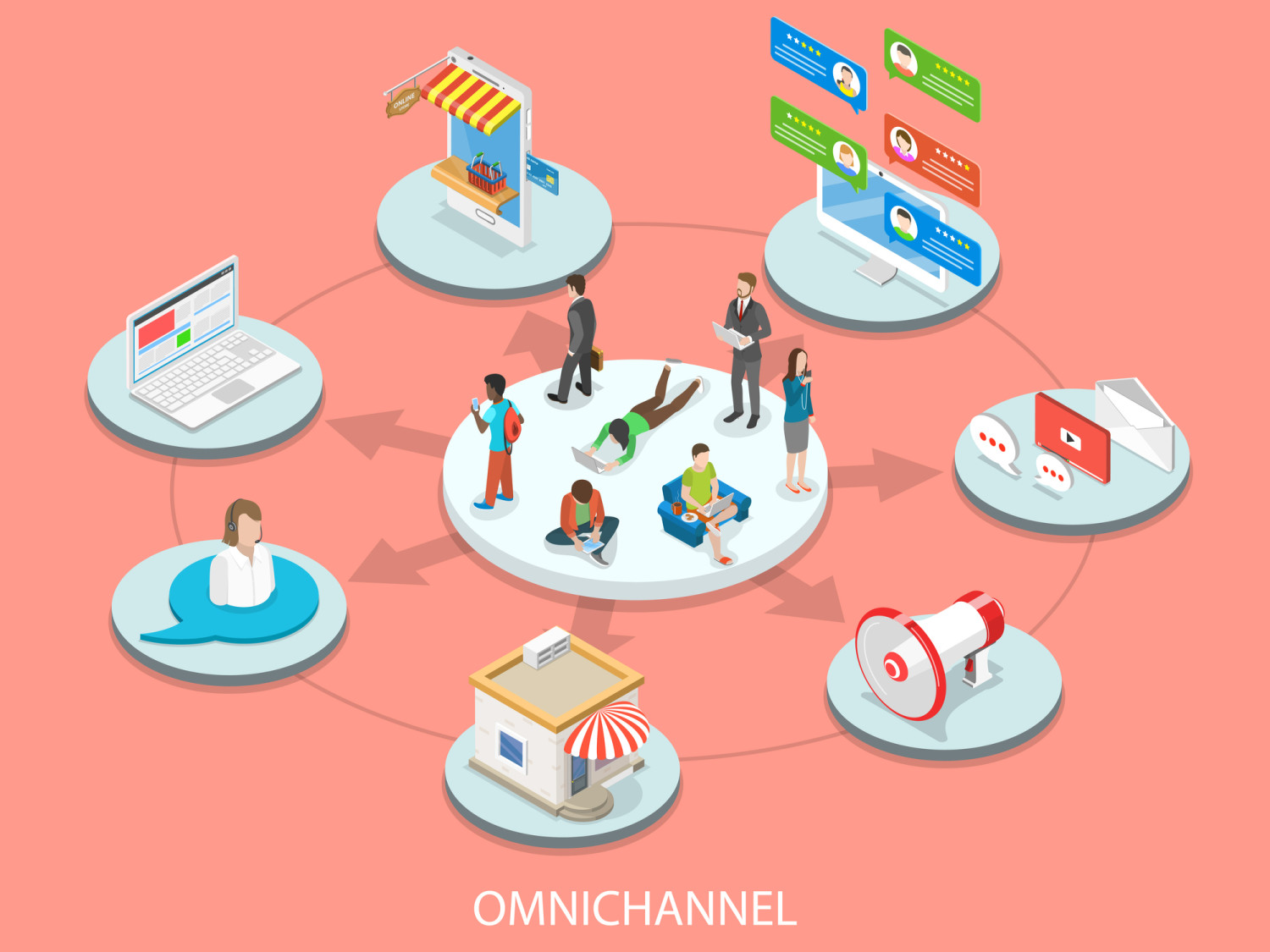//
Sep 16, 2020
Omnichannel vs Multichannel Marketing: How is Marketing Shifting?
Regardless if you're marketing savvy or not, you've probably heard the terms ‘Multichannel Marketing’ and ‘Omnichannel Marketing’ tossed around in high frequency akin to giving children candy on Halloween.
Both are strategies of a marketing approach called .
The Power of Inbound Marketings Methods
For those unfamiliar with the concept, Inbound Marketing is the new way to market your product in this growing digital age. Just how handing out fliers and taking a traditional marketing approach was effective many years ago. Inbound Marketing adapts those approaches to connect with customers today.
To understand what and Multichannel Marketing are all about, we first need to know what Inbound Marketing is and what it offers to a company.
In short, Inbound Marketing is a marketing strategy that automates the marketing process to build a customer-centric model. Inbound Marketing boosts transparency, trust, and customer retention by utilizing various tools and platforms such as supporting content, email marketing, social media management, and SEO.
You can't have inbound marketing without a powerful CRM to back it up!
Not 100% on what a CRM can do for your business? Watermark is offering free self-serve training videos to guide you on how a CRM can enhance your sales and marketing teams.
Inbound Marketing is broken into three components:
- Attract - Create relatable, engaging content— from to blog posts, to attention-grabbing social media that attract new customers.
- Engage - Encourage new leads and retain current customers with brand loyalty. Email marketing automation, conversational bots, lead management, and workflows create a channel where your customers can communicate with your company about their specific questions and needs.
- Retain - Create lasting relationships by going the extra mile to delight your new and existing customers. This final step works in tandem with creating email marketing workflows and marketing automation.
Inbound Marketing offers an analytical approach to creating smart content through and creating timely, effective, and impactful content tailored to each customer. Inbound Marketing takes this approach through these various methods:
Marketing Automation Software is a Massive Component
- Inbound marketing strategies utilize Customer Relationship Management (CRM) software, like Hubspot or Sharpspring, to house your marketing tools, social handles, sales leads, etc.
- CRMs/marketing automation software creates a centralized marketing/communications platform to automate workflows, send reminders, organize customer information, and allow sales reps to focus on building and fostering customer relationships.
Content Creation That Delights AND Nurtures
- Inbound Marketing strategies take an educational approach with supporting content to connect to your community and customers through informative, eye-catching blog posts, customized emails, and web copy.
- By using keyword research and SEO tactics, the content can reach customers where they are in the sales pipeline. This can also be bolstered with data analytics and paid and social advertising campaigns to direct traffic to the intended initiative to attain specific company goals.
Using Search Engine Optimization (SEO) to Drive Traffic
- "If you're not first, you're last." Inbound Marketing utilizes SEO strategies to help a business become the top result on a search engine result page such as Google.
- Analyze SEO and other relevant data to measure and establish ROI goals and ensure that prospects are moving through the sales funnel to create long-lasting and satisfied customers.
Now that we are familiar with everything that Inbound Marketing entails, where does Multichannel and Omnichannel Marketing come in? Both are tactics of an Think of it like this, Inbound is the tools, and Omnichannel and Multi-channel are the way you use those tools.
Interested in learning more about inbound marketing?
What Is Multi-channel Marketing?
Multi-channel marketing creates a strategy that spans numerous channels such as a website, social, mobile, direct mail, etc.
Every channel is separate and independent from the others. Each channel has its own strategy and goals.
This is a perfectly fine marketing approach if you want each channel to achieve specific benchmarks and goals to promote your business and message to different targeted audiences.
What is Omnichannel Marketing?
Omnichannel is a more recent trend that builds off Multi-channel marketing but seeks to create an experience beyond the boundaries of Multi-channel efforts.
Where the Multi-channel approach creates separate messages across various channels, an Omnichannel strategy aims to create a seamless experience and unified message across multiple channels.
Omnichannel Marketing vs Multi-channel Marketing
The difference here is that a Multi-channel strategy must be finished on the channel it started on. Think about the shopping experience. Let's say that we are searching for furniture on multiple websites such as Target, Walmart, American Furniture Warehouse, or even Ikea.
These websites, along with all other e-commerce sites, track your data and your search history. If we started the process on our computer, stopped, and then returned to those websites, we could resume where we left off. We would also see recommended or featured items based on our search history, or "commonly bought together" strategies these companies have implemented.
Overall, an excellent experience, but can you spot the one big flaw with this approach?
The answer is simple: our movement is only tracked on that specific website and on the particular channel we used. What if we resumed our search on our phone? That history would not be there unless you were logged into an account on that platform.
Benefits of Omnichannel Strategy
The Omnichannel strategy remedies this with its approach to create a unified, seamless experience across all platforms through personalized and targeted content. Let's apply the same scenario, but in this case, we started the process through a simple Google search on the Chrome browser to find vendors and competitors that sell those products.
Chrome tracks data and search history and stores it so that the same information can be accessed from any device logged into your Google Chrome account.
This is why Omnichannel Marketing has become the preferred approach for digital marketing efforts. An average of report starting a task on one device but end it on another device. Maintaining consistency across these platforms reaffirms a business's strong reputation in the eyes of the consumer.
With more channels connected through omnichannel marketing and a more seamless process, businesses are sure to see an increase in website traffic, engagement, and sales. Companies with robust omnichannel strategies retain that have weak omnichannel customer engagement.
If you're interested in adopting an Omnichannel Marketing approach but don't know-how, give us a call. We'd be glad to help you lay the framework to create a strategy that educates and engages with your customers with a personalized journey that will result in long-lasting business relationships.
Ready to speak with an experienced strategist?







